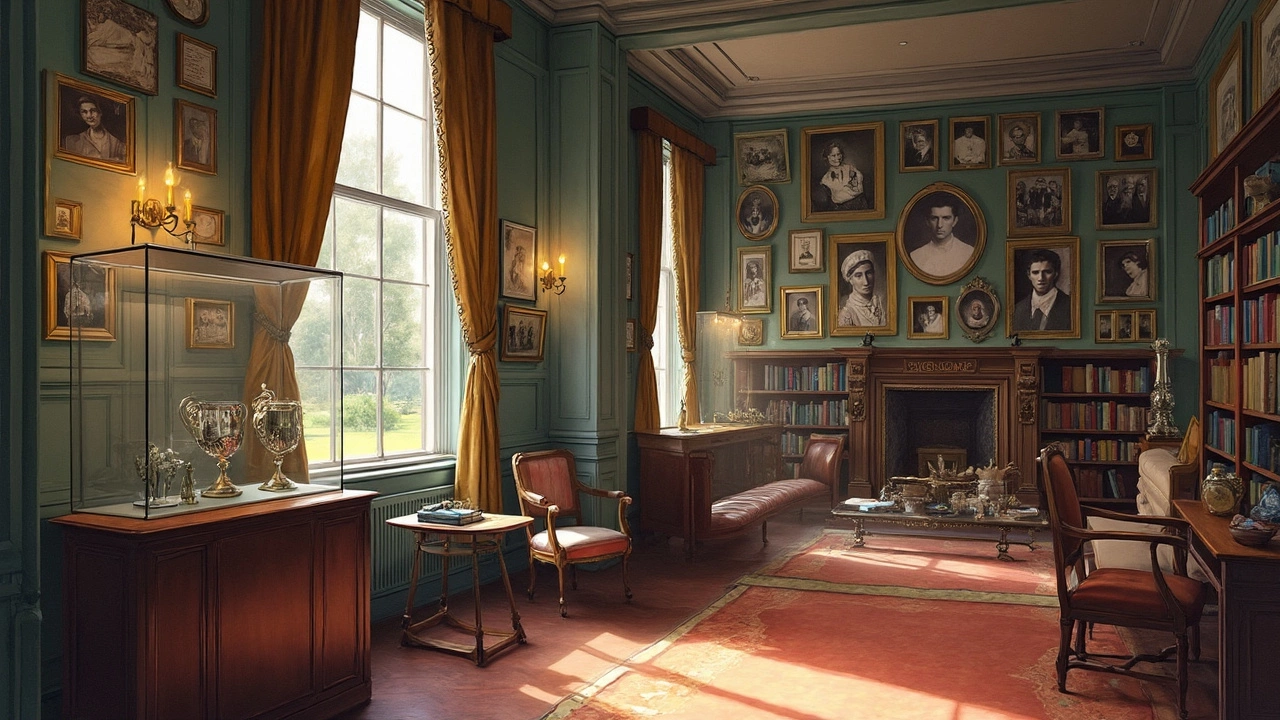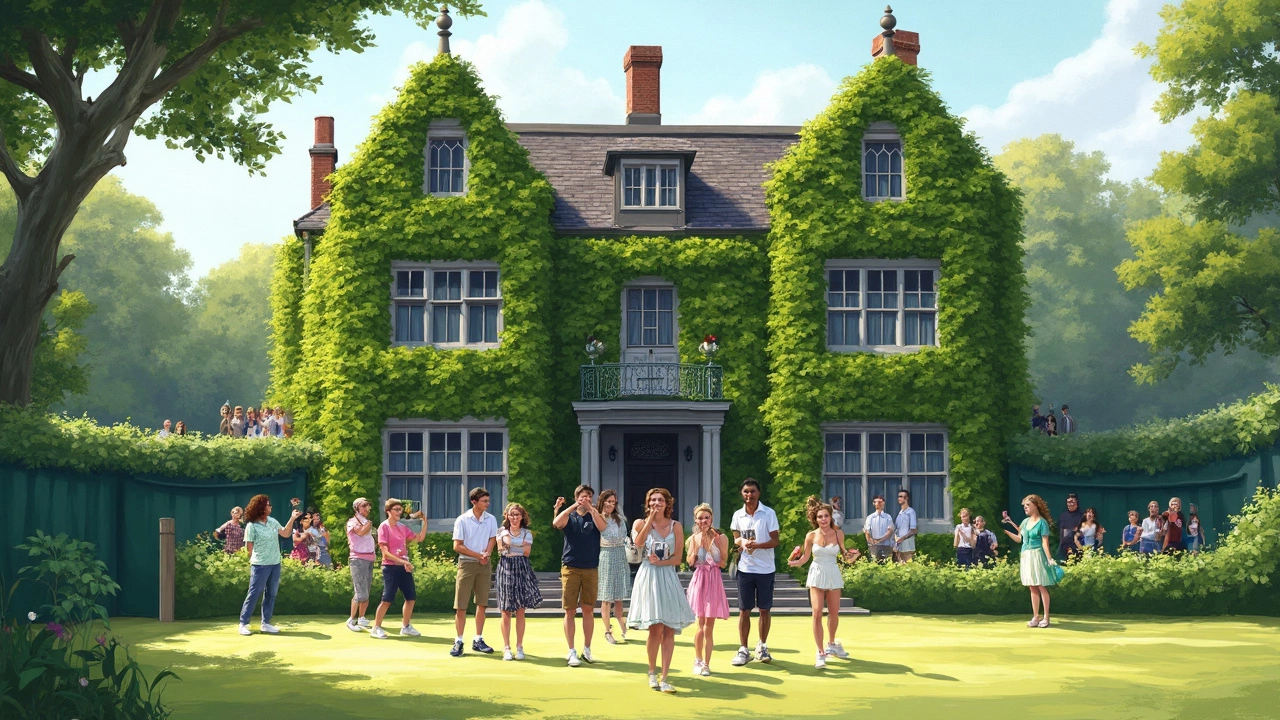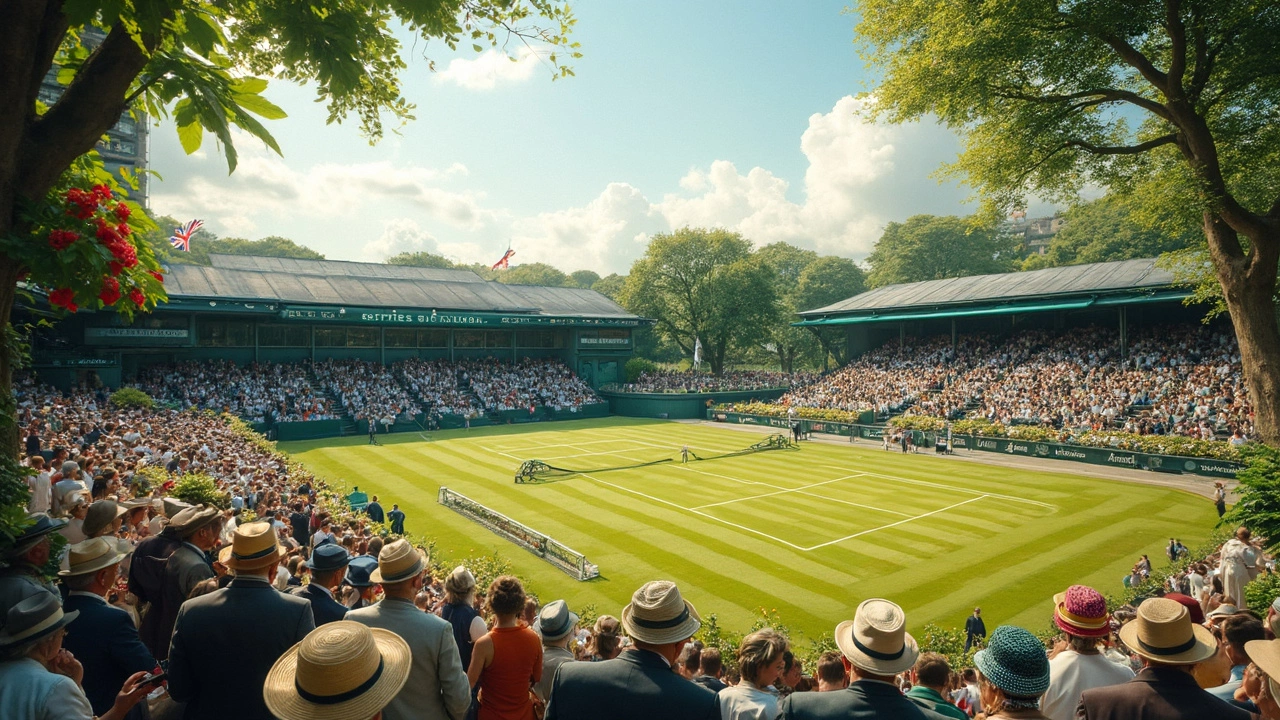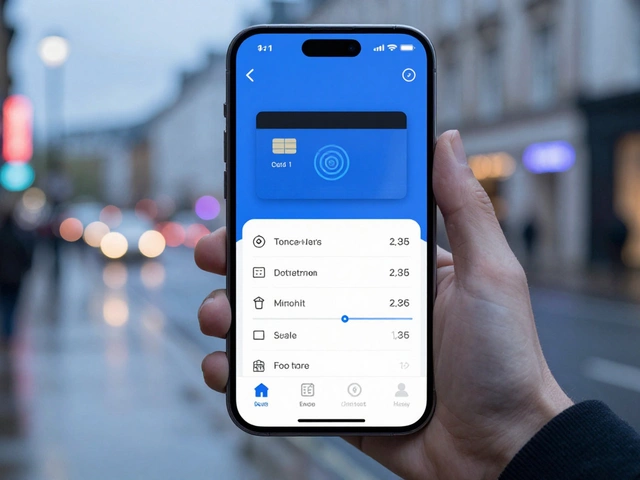If you love tennis or even just peek at the headlines during Wimbledon season, you’ve seen the All England Lawn Tennis Club pop up every summer. Most people think of it as the place where strawberries, cream, and tight white shirts rule. But there’s much more going on behind those famous green gates.
Did you know that the club didn’t start out as a big tennis club at all? Back in 1868, it kicked off as a croquet club. Tennis came a few years later, almost as a side hobby. Now, players from around the world lose sleep dreaming of stepping onto its grass courts.
The All England Lawn Tennis Club doesn’t sit still between tournaments, either. They’re always improving—think upgraded seating, climate-friendly grass treatments, and even high-tech court covers to battle the famously moody British weather. If you’re planning to visit, or just want to feel like an insider, knowing a few of these details can totally change your perspective.
- The Story Behind the All England Lawn Tennis Club
- What’s New at the Tennis Club This Year
- Tips for Visiting the Tennis Club
- Iconic Grass Courts and Maintenance Secrets
- Surprising Facts Even Fans Don’t Know
The Story Behind the All England Lawn Tennis Club
Everything about Wimbledon is linked to the tennis club at its heart, but the story actually kicked off with croquet—yep, that's right. The club opened its gates in 1868 under the name "All England Croquet Club." It wasn’t until 1877 that someone decided to introduce lawn tennis, and that’s what set the stage for the famous Wimbledon Championships.
The very first tennis tournament at the club wasn’t some huge international showdown. It was set up just to raise money for roller repairs on the lawn. Only 22 players signed up that year. Fast-forward to now, and it’s the most-watched tennis event worldwide, with millions of viewers glued to their screens each summer.
You might think the rules and traditions have always been set in stone, but the club is actually pretty flexible when it comes to change. For example, players had to wear all-white outfits from the start, and that dress code still holds strong. But things like retractable roofs and equal prize money were all introduced as new needs popped up.
Here’s a quick breakdown of major events in the club’s history:
- 1868: Founded as a croquet club
- 1877: First lawn tennis tournament for fundraising
- 1922: Centre Court opened at the current Church Road site
- 1979: First electronic scoreboard
- 2009: Centre Court roof completed
- 2007: Equal prize money for male and female champions
| Year | Key Event |
|---|---|
| 1868 | Croquet club founded |
| 1877 | First Wimbledon tennis tournament |
| 1922 | Centre Court moves to Church Road |
| 2009 | Centre Court roof finished |
The club’s main focus has always been creating a top-notch experience for players and fans. There’s a real mix of old and new baked right into the place—think strict rules about white outfits right alongside high-tech grass maintenance. That mix makes the All England Lawn Tennis Club more than just a venue: it's a living piece of tennis history.
What’s New at the Tennis Club This Year
It’s been a busy year for the All England Lawn Tennis Club. In 2025, the club ramped up both its sustainability game and fan experience. If you thought last year’s improvements were cool, this year’s might surprise you.
The club just finished installing LED floodlights on all main show courts. Night matches aren’t just for TV ratings—players now enjoy more consistent lighting, and the club slashes its energy bill. These new lights use about 40% less power than the old ones, making them both cost-effective and eco-friendly.
For the first time, mobile tickets became the only way in. Physical tickets are now history, so everything’s digital—speeding up the gates and making scalping almost impossible. This change ties into more frictionless entry and boosts security. And yes, the mobile ticket app even tells you the best time to grab strawberries to avoid the lines.
A huge upgrade happened in Court 1 seating. There are now 900 extra comfy, padded seats in the revamped North Stand. The feedback last summer? Not enough legroom and those old benches were brutal after two sets. Problem solved—and the new seating uses recycled material from last year’s old stadium seats.
Players haven’t been left out. The club trialed a new smart turf system on the outer courts. This means sensors now track moisture, foot traffic, and wear, so groundskeepers can fix up rough patches before they mess up anyone’s game. It’s all about delivering that laser-perfect grass surface that Wimbledon is famous for.
Some stats that sum things up this year:
| Upgrade | Impact |
|---|---|
| LED Lighting | 40% less energy use |
| Mobile-only Tickets | Faster entry, zero paper waste |
| New Seating | +900 seats, all recycled materials |
| Smart Turf | Real-time court care, fewer delays |
If you plan to visit or watch the action from home, these changes make for a smoother, greener, and more comfy experience, whether you’re in the stands or following every volley online.

Tips for Visiting the Tennis Club
Visiting the All England Lawn tennis club during Wimbledon is a bucket-list item for tennis fans. First off, tickets aren’t easy to snag. The public ballot opens in autumn for next year’s tournament, but you’ve got to apply early and cross your fingers. If you miss out, there’s still the famous Wimbledon Queue—show up at the park by the club before dawn with a folding chair, snacks, and patience. Thousands line up for same-day tickets, and yes, camping overnight is totally normal.
Dress codes are stricter than most sporting events, especially if you score a spot on Centre Court or any hospitality area. Think smart-casual: jeans are fine, sports jerseys or big hats aren’t. Sun can sneak up on you, so pack sunscreen, a refillable water bottle (there are free fountains), and an umbrella for the classic British drizzle.
Don’t bother lugging a full meal. You can bring in some snacks and non-alcoholic drinks, but no coolers or hard-sided bags. Inside, food ranges from classic strawberries and cream at around £2.50, to sandwiches, salads, and hot meals—prices are high but not as wild as some stadiums. Alcohol, if you want it, is limited (one bottle of wine or two beers per person), and they check.
Phones and cameras are fine for snapping pics outside and on the outside courts, but filming is a big no-no during matches. If you want a behind-the-scenes glimpse, book a guided tour—when the tournament’s not on, tours take you through Centre Court, the media center, and even the player’s entrance. Last tip: walking shoes are a must. The grounds are big, and with all the exploring, you’ll rack up steps before the first serve is even hit.
Iconic Grass Courts and Maintenance Secrets
The real stars at the tennis club aren’t just the players, but those famous Wimbledon grass courts. Every single blade of grass is rye, chosen specifically to survive hours of play and unpredictable London rain. Only about 8mm tall, it’s cut almost daily, starting weeks before the first serve. That short length helps keep the bounce low and the play fast—super different from clay or hard courts.
Taking care of these courts is serious business. The club’s grounds team works year-round, and it’s not just a quick mow and go. Their must-haves for perfect grass include:
- Laser-guided mowers for level, even grass
- Covers that unroll in minutes at the first sign of rain
- Custom drainage to stop puddles in their tracks
- Seed overseeding and lawn rolling for strong, dense turf
- Organic fertilizers to keep things green without harsh chemicals
If you’re ever lucky enough to stand on Centre Court, look for the white baselines—they’re painted right over the grass. The team has to redo them several times during the tournament because pro shoes wear them out fast. Outside of Wimbledon fortnight, players actually play on different practice courts so the main show courts stay pristine. The club even bans dogs from the lawns (sorry Max!) unless it’s a guide dog. The attention to detail is wild, but that’s what keeps the courts legendary.

Surprising Facts Even Fans Don’t Know
Everyone expects royal appearances and crisp white outfits. But there’s plenty under the hood at the All England Lawn Tennis Club that gets way less airtime. Here’s a look at a few jaw-droppers that even regulars might miss:
- Grass replacement is basically a full-time job: Right after the championships end, the main courts are stripped, reseeded, and babied for months. It takes 15 months for the grass to mature properly, so they’re always nurturing next year’s playing surface.
- Wimbledon is the only Grand Slam that insists on white clothing: Players need to wear almost entirely white, even down to the smallest trims. Umpires do random checks. Imagine being sent back to the locker room because your socks are too colorful!
- The famous Centre Court roof isn’t just for rain: It takes about 10 minutes to close during a downpour. More surprisingly, it’s also used when there’s too much sunlight or extreme heat, to keep playing conditions even for everyone.
- No advertising boards line the courts: Most big sporting venues are plastered with ads. Not here. You’ll only spot Rolex and a couple other brands—strict partnerships, no banners distracting the action.
- A secret menu at the club kitchen: Members and guests can order food that’s never listed on the official menu. Your best chance to try it? Get friendly with a regular and ask for “off-menu” recommendations.
If you’re curious how this all stacks up, here’s a peek at some numbers that explain just how unique this place is:
| Fact | Detail |
|---|---|
| Annual strawberries served | Over 2 million |
| Years since club was founded | 157 (est. 1868) |
| Full-time ground staff | 16 specialists (plus extras for the tournament) |
| Centre Court capacity | 14,974 seats |
| Number of ball boys/girls during Wimbledon | Around 250 |
Even stranger: pigeons sometimes try to join the action. There’s actually a trained hawk named Rufus that patrols the skies during Wimbledon to keep birds away from the grass courts. Only at this kind of tennis club would a hawk have a full-time gig.



